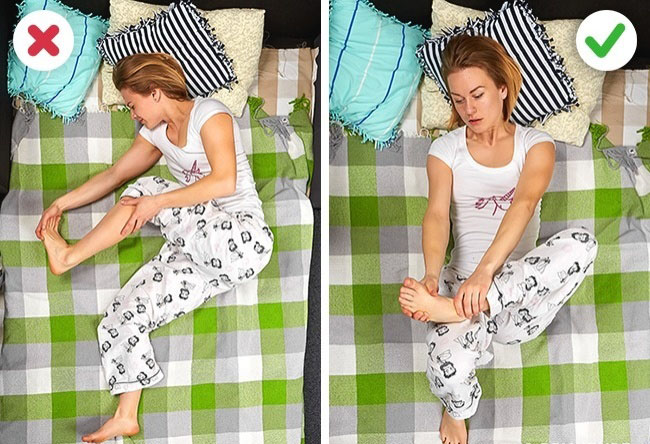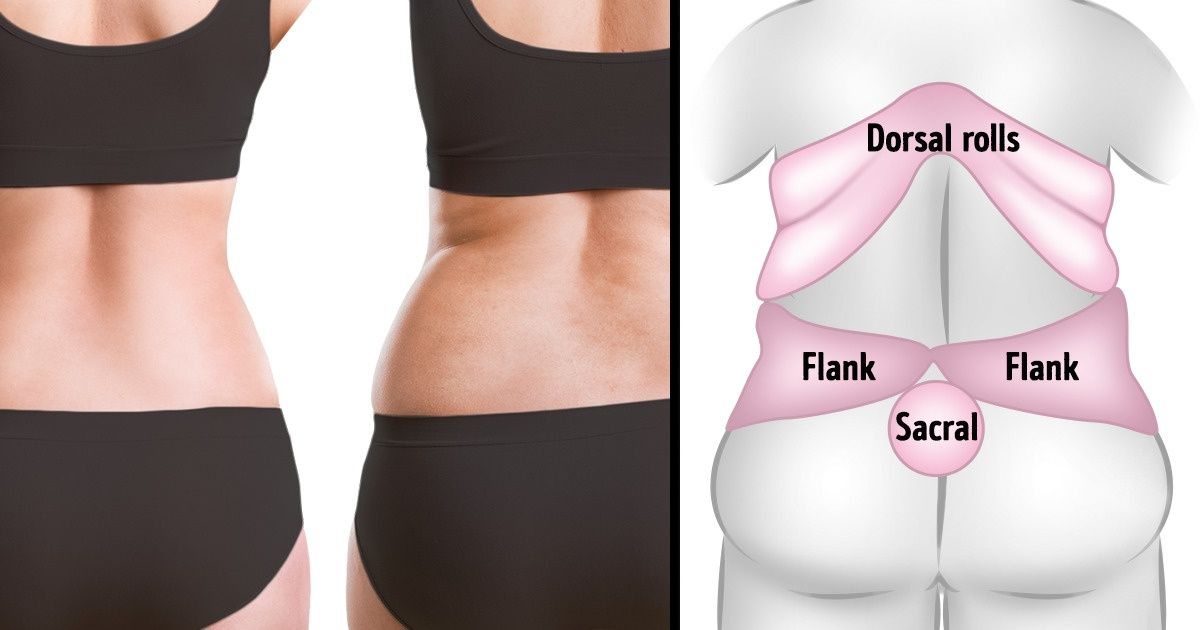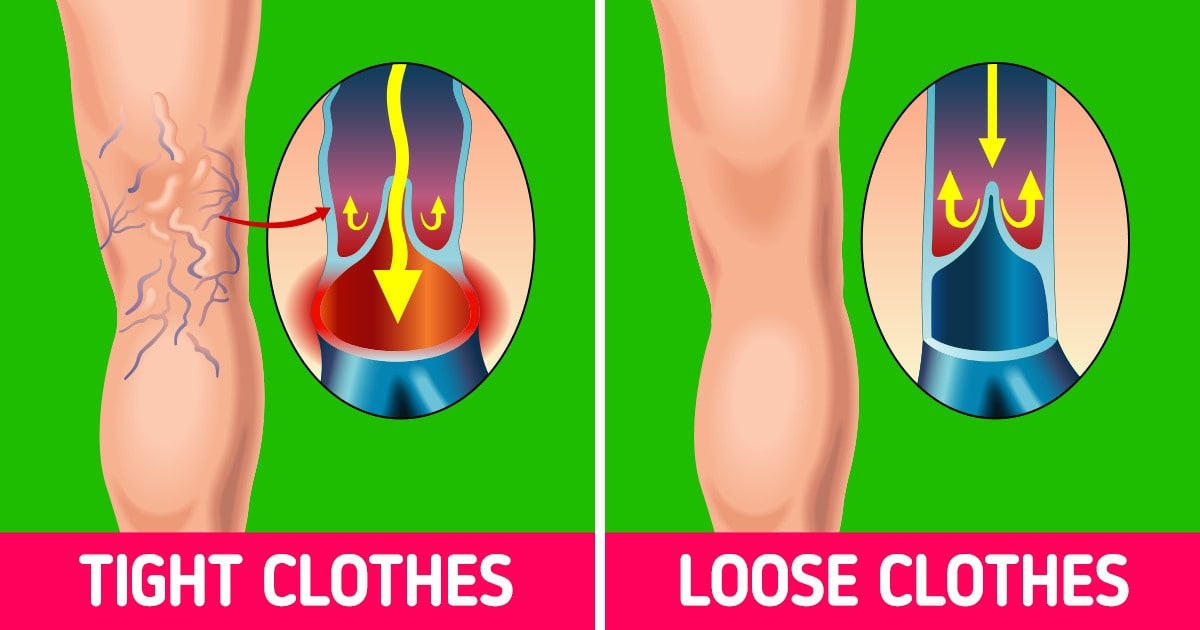We spend about a third of our lives sleeping. Both the quality of night rest and general health depends directly on the sleep posture and what we do before going to bed.
At CreativeSide, we’ve compiled recommendations from leading experts on how to get proper sleep to solve all your health problems.
Healthiest And Worst Sleeping Position
1. Sleep Position To Relieve Shoulder Pain

If you wake up with shoulder pain, avoid sleeping on your side, especially your painful shoulder. Sleeping on your stomach is also not recommended, as it causes a misalignment of the shoulders.
The best sleeping position is to lie on your back. Put a thin pillow (an orthopedic pillow will work best for you) under your head. Take another pillow, lay it face down and hug it. Your shoulders will now be in the correct and stable position.
If you don’t like sleeping on your back, try lying on your side so it doesn’t hurt. Stretch your legs slightly toward your chest and place a pillow between your knees. Sleeping with your hand under your head is not recommended as it produces an unnatural shoulder position.
Sources: everydayhealth, home-remedies-for-you, mayoclinic
2. Sleep Position To Reduce Back Pain

If you have back pain, it is very important to maintain the normal curves of the spine. If your mattress is too soft, it is time to buy a new one.
Sleeping on your back is probably the best position for you. Put a pillow under your knees to help restore your natural spinal curves and reduce strain on your tendons. You can also try a small towel wrapped around your lower back for additional support.
If you have an upset stomach, place a pillow under your lower abdomen and pelvis so that your lower back doesn’t move forward.
If you like sleeping on your side, it is better to take the fetal position. Stretch your legs slightly toward your chest, keeping your back naturally arched. Put a small pillow between your knees. This can help you lighten the load on your lower back.
Sources: mayoclinic, sleepfoundation
3. Sleep Position To Relieve Neck Pain

As with back pain, your neck needs support while you sleep.
In general, sleeping on your back with a pillow under your head and a pillow under each arm is the best option. People with neck problems should choose their pillows very carefully, and it is best to opt for orthopedic or roller pillows.
If you prefer to sleep on your side, make sure the pillow is not too high. It should not be more than 15 cm. Ideally, the height of the pillow should match the width of one shoulder to help keep the neck in position.
If you’re a stomach sleeper, use the thinnest pillow you can find. It is best not to sleep in this position, as lying down all night with your head turned to one side will stretch your neck.
Sources: Journal of Pain Research, spine-health
4. Can’t Fall Asleep At Night

It can be difficult to ban phones and computers before bed, but you should. It really helps if you have trouble falling asleep. The light from the screens affects our sleep and wake cycles.
Avoid consuming caffeine (coffee, energy drinks, sodas, black tea, chocolate) at least 6 hours before bed.
Morning and afternoon exercise. This helps tone the entire body, improves blood circulation and helps you fall asleep much faster.
Sources: Journal of Applied Physiology, Neuroendocrinology Letters
5. Can’t Stay Asleep At Night

If you generally wake up in the middle of the night, you should not only stop using your devices before bed but also avoid alcohol before bed. Alcohol disrupts the balance of water in your body and affects your sleep cycle.
Also, check the temperature in your room. The ideal sleeping temperature is 20 to 22 ° C.
Sources: National Institute on Alcohol Abuse, Sleep Foundation, Sciencedirect
6. Can’t Wake Up Early

Everyone seems to suffer from this problem, but, curiously, it is very easy to solve. Set your alarm at the same time every day (even on weekends). If you want to get up early, you must sleep early at night.
Sources: Tandfonline, Jstage, PubMed
7. Best Sleeping Position To Stop Snoring

If you usually snore, avoid sleeping on your back. In this position, the tissues of the throat give way and his tongue falls back, narrowing the airways.
Choose your pillow carefully. Overly soft pillows can tilt your head back and increase snoring. Use an additional pillow or raise the head a few inches to prevent the tongue from falling onto the windpipe.
Sleep on your side. With the head in a natural position, nothing will restrict airflow.
Do special exercises. Exercising the tongue and throat muscles can help strengthen them and reduce snoring.
Source: Harvard Medical School
8. Best Sleeping Position To Avoid Leg Cramps

Leg cramps are usually sudden spasms, or stiffness, of the calf, foot, or thigh muscles. Almost 80% of people suffer from this problem, regardless of their age. Leg cramps at night are usually related to illness, nerve damage, or a lack of trace elements. If you have this condition very often, talk to your doctor.
A good way to stop leg cramps is to stretch and strengthen the calf muscle. You can try yoga or massage your legs before bed. Remember: if you want good results, you must exercise regularly.
Sources: Cleveland Clinic, Mayo Clinic
9. Other Sleeping Problems

Sleep disorders can be caused by many factors, from fatigue and uncomfortable shoes to problems with the digestive or nervous system. Only a doctor can determine the cause of the problem and advise on treatment.
If you suffer from frequent heartburn, it’s a good idea to stay on the left side while getting some z. The sleeping position on the left side prevents the stomach contents from returning to the esophagus, avoiding heartburn.
Do you have leg pain at night? Use a roll-up pillow or footboard to keep your legs up during sleep. The venous blood accumulated in the legs runs and you feel better. Also, try rubbing or lightly massaging your legs before retiring overnight, and avoid consuming caffeine at least 6 hours before bed.
Sources: Cleveland Clinic, Healthline, Сlevelandclinic
Based on materials from thisisinsider









